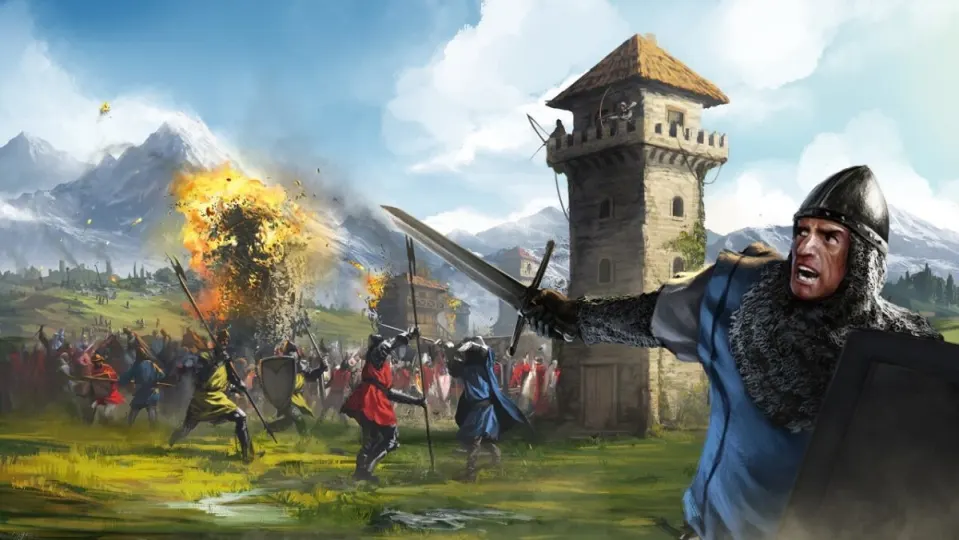If you are already combing some gray hair, or simply a lover of real-time strategy games, if you say the following three syllables you will know which game they belong to: “Wololo“. It is one of the most repeated words of Age of Empires and its myth, to such an extent that brands like Red Bull have been organizing a championship like Red Bull Wololo for more than five years.
Age of Empires is timeless. Although more than 25 years have passed since its first installment, the strategy title continues to enchant millions of players around the world, particularly with Age of Empires II, its second part. But what makes it so special? Why is it 2023 and why is it arriving today, January 31, on Xbox and the cloud?
A simple but complex scheme
When people talk about “simplicity”, this is usually taken in a negative way. Something “simple” does not have to be bad. This is one of the biggest mistakes made in our day-to-day lives. “Simple” means that it has no complications or difficulties. Age of Empires II became so popular for, precisely, being simple (and don’t load the gun so fast, which is also complex).
The game starts from a very simple premise -which at the same time is simple-: you must obtain material resources to create buildings and military units. That’s it. Once you have these on the map you are playing, you must confront the enemies, either defending your territory or attacking them to defeat the rival base.
So much for this “simple” approach. Now comes the complex one. Behind this game design mechanic lies an enormous complexity, since each unit has its own characteristics, in addition to the fact that the terrain also has its own exclusive specifications. To this we must add a layer of resource management very exaggerated depending on the difficulty in which we are. The materials on the stage are finite, so we must know how to manage them correctly. You can not go crazy cutting down trees, as there will come a time when there are no more on the map.
Age of Empires II worked – and works – so well because of this: the game has an escalation component where the player sets his level of experience. The more demanding you are, the more you will learn, the more you will internalize and the more you will get out of it. However, if you just want to create units and send them to fight, the game will not prevent you from doing so; and in fact, you will most likely emerge victorious from that battle. You set the bar where you see fit.

Civilizations as a trademark
The playable proposal offered by Age of Empires II dazzled millions and was taken to dozens of video games in a similar way. However, there was another point that made the work of the now defunct Ensemble Studios stand out: the large number of civilizations that could be played with, each one more varied than the last.
In the definitive edition now released on Xbox there will be up to 35 different civilizations. They all respond to a series of common patterns: they have different stages of evolution depending on their age, there are common units for melee and ranged combat, and they are all created in the same way (with in-game materials). However, the difference is that each civilization has some exclusive units, as well as being specialized in certain fields.
Thanks to this heterogeneity present in the game, a player can choose, for example, the Japanese, while another goes to the other side of the planet and selects the Teutons. Players can keep those civilizations that suit them best according to their style of play or simply for pure aesthetic taste. And here is another point of support: the multiplayer.
Age of Empires II appealed to so many because it allowed for fast and vibrant multiplayer experiences. Seeing a scout arrive from afar that belonged to another faction was frightening. And yes, it could be a unit that didn’t have great attack power, but the fear was represented through another aspect such as being spotted. We were no longer invisible on the map: now they knew where we were.
It was time to prepare for battle as quickly as possible: if it was a map with water, create a port to have good support ships; if there were mountains, place long-range units; if it was a steppe, have good cavalry to go in for the kill. Strategies were developing and the games against other players were vibrating by themselves.
Why did we like -and we like- Age of Empires II so much? Because so many years later, the pillars of real-time strategy have hardly moved since this title internalized them -not created them, be careful with this- with its game system. That’s why we keep playing: because it’s still as good as ever.


